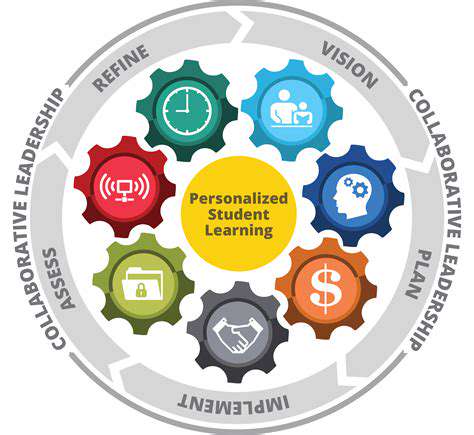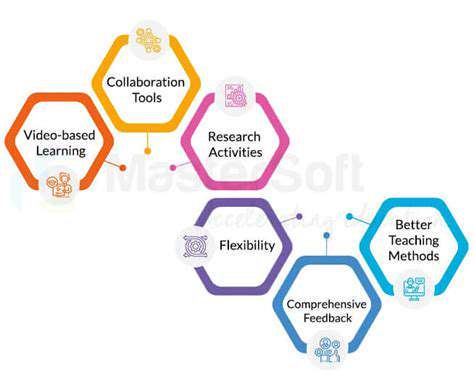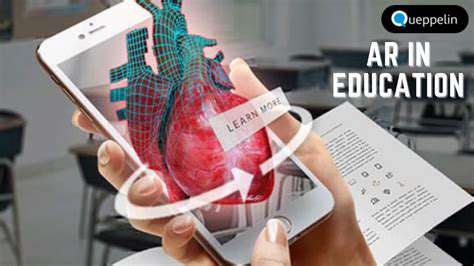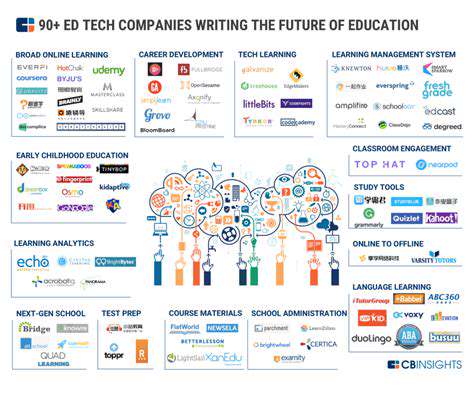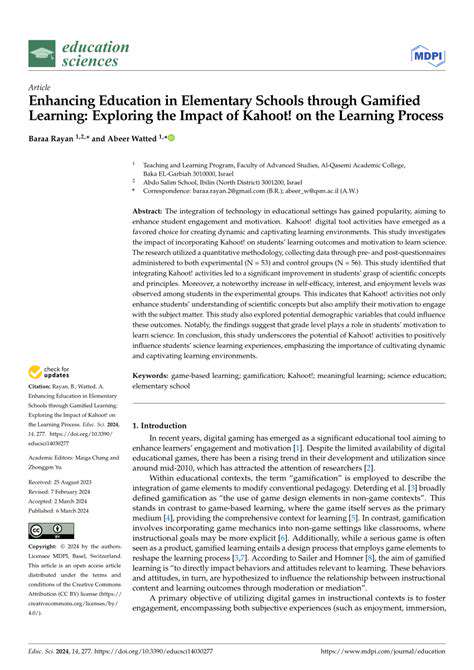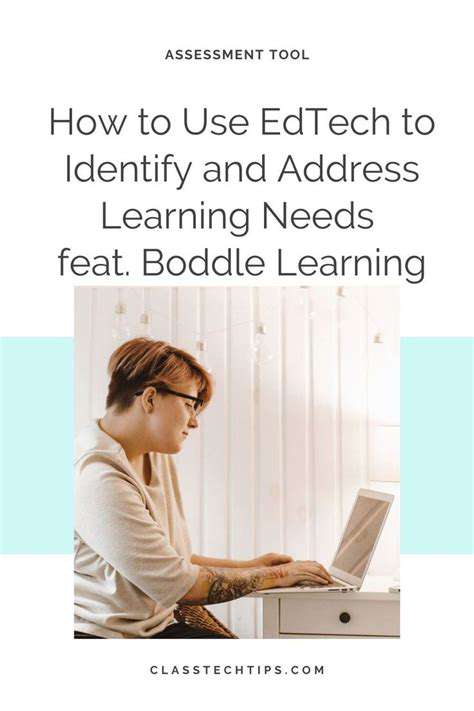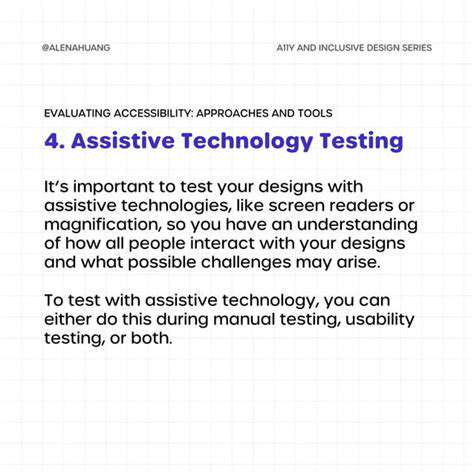Designing Interactive Case Studies for Mobile Learning
Interactive Elements for Active Learning
Interactive Simulations for Hands-on Experience
Interactive simulations are crucial for active learning in mobile-based case studies. They allow learners to manipulate variables, observe consequences, and experiment with different scenarios in a safe and controlled environment. This immersive experience goes beyond passive reading or listening, fostering a deeper understanding of complex concepts and processes. Simulations can model real-world situations, enabling learners to practice decision-making in a risk-free environment and develop critical thinking skills. For example, a mobile case study on supply chain management could include a simulation allowing users to manage inventory levels, track shipments, and adjust production schedules to optimize efficiency.
By actively engaging with the simulation, learners gain a practical understanding of the challenges and opportunities involved in managing a complex system. This firsthand experience significantly enhances knowledge retention and application compared to traditional methods.
Interactive Maps and Visualizations
Integrating interactive maps and visualizations into mobile case studies can significantly enhance understanding and engagement. Users can explore geographical data, track movements, and visualize relationships between different locations or variables. This approach allows learners to see patterns, identify trends, and grasp spatial relationships more effectively than static representations. For instance, a case study on urban planning could utilize interactive maps to visualize population density, traffic flow, and infrastructure development.
Interactive Quizzes and Assessments
Incorporating interactive quizzes and assessments into the mobile case study experience allows for immediate feedback and reinforcement of learning. These can take various forms, including multiple-choice questions, short answer responses, and interactive scenarios. This dynamic interaction keeps learners engaged and provides them with an opportunity to gauge their understanding of the material in real-time. Regular assessments also help learners identify knowledge gaps and focus their efforts on areas needing further exploration. The ability to revisit questions and assess progress in a mobile format is particularly valuable.
Gamified Learning Activities
Integrating gamified elements, like points, badges, and leaderboards, can motivate learners and increase engagement in mobile case studies. This approach transforms the learning process into a more enjoyable and competitive environment. Gamification can be used to encourage exploration of different facets of the case study, promote collaboration among learners, and provide incentives for completing tasks. For example, a case study on marketing could include a mini-game where learners strategize and execute campaigns to maximize sales.
Interactive Storylines and Scenarios
Interactive storylines and scenarios allow learners to experience the case study from different perspectives and explore various decision paths. This immersive approach promotes critical thinking and problem-solving skills by presenting learners with choices and consequences. For instance, a case study on ethical dilemmas in business could present multiple scenarios requiring learners to weigh different ethical considerations and evaluate potential outcomes. The ability to experience different perspectives in a mobile format facilitates deep engagement.
Interactive Collaboration Tools
Facilitating collaboration among learners is crucial in mobile case studies. Interactive tools, such as discussion forums, chat features, or real-time feedback mechanisms, can foster interaction and knowledge sharing. This collaborative approach enables learners to discuss different perspectives, exchange ideas, and learn from each other's experiences. Features that allow learners to share insights and contribute to a shared understanding of the case study promote active learning and teamwork skills. Moreover, the mobile aspect encourages accessibility and real-time collaboration.
Data Visualization and Analysis Tools
Incorporating tools for data visualization and analysis allows learners to explore and interpret complex data sets presented within the case study. Interactive graphs, charts, and dashboards can help learners understand trends, patterns, and relationships within the data. This approach allows learners to draw conclusions, make predictions, and support their arguments with evidence. For example, a case study on financial analysis could include interactive tools for analyzing financial statements and visualizing key performance indicators.
Promoting Reflection and Discussion
Encouraging Critical Thinking
Interactive case studies, when designed thoughtfully, can foster critical thinking skills in learners. By presenting learners with complex scenarios and challenging them to analyze, interpret, and evaluate different perspectives, the studies can encourage a deeper understanding of the subject matter. This process of active engagement is crucial for developing critical thinking abilities, which are essential for problem-solving and decision-making in various contexts. The interactive elements allow learners to explore different possibilities and outcomes, leading to a more profound understanding of the underlying principles and concepts.
The ability to analyze case studies critically involves identifying key issues, evaluating evidence, considering alternative explanations, and drawing reasoned conclusions. This process requires learners to actively engage with the material, question assumptions, and consider different viewpoints. This active engagement strengthens their analytical skills and enhances their ability to think critically, which is a valuable asset in various aspects of life.
Facilitating Collaborative Learning
Mobile learning platforms offer unique opportunities for collaborative learning, enabling learners to engage in discussions and knowledge sharing with peers. Interactive case studies can be designed to encourage group work, promoting discussion and debate among participants. This collaborative environment fosters a sense of community and allows learners to benefit from diverse perspectives and learn from each other's insights. This interaction is critical for developing communication and teamwork skills.
By working together to analyze case studies, learners develop crucial interpersonal skills. They learn to articulate their thoughts, listen to others' perspectives, and engage in constructive dialogue. This collaborative approach fosters a supportive learning environment, enabling learners to learn from one another and develop a deeper understanding of the material.
Improving Knowledge Retention
Interactive case studies offer a more engaging and dynamic learning experience compared to traditional methods, leading to improved knowledge retention. The active participation and problem-solving required in interactive case studies help learners to connect abstract concepts to real-world situations. This connection creates a stronger memory trace, enhancing knowledge retention and application. This is particularly important in mobile learning, where the focus often needs to be on the effectiveness of information transfer.
By actively participating in the analysis of case studies, learners are more likely to remember the information presented. The interactive elements and real-world scenarios create a more memorable experience compared to passive learning methods. This active learning approach strengthens knowledge retention and allows learners to apply the knowledge in practical situations.
Promoting Deeper Understanding of Complex Issues
Interactive case studies are particularly effective in helping learners grasp complex issues and scenarios. The depth of analysis required to understand the intricacies of the presented situation fosters a more profound comprehension of the subject matter. By navigating the complexities of a case study, learners develop a holistic understanding of the issue, going beyond surface-level knowledge. This deepened understanding is crucial for effective application in a variety of situations.
The interactive nature of these studies allows learners to explore different facets of a case, fostering a deeper understanding of the underlying concepts and principles. By engaging with the material in a multifaceted way, learners are better equipped to analyze and address complex problems encountered in real-world scenarios.
Enhancing Application of Knowledge
Interactive case studies are designed to move beyond rote memorization and focus on practical application. By presenting scenarios that mirror real-world situations, learners are challenged to apply their knowledge to solve problems. This application-focused approach helps learners understand how to use their knowledge in a relevant and meaningful context. This practical application is crucial for learners to successfully apply their knowledge in future situations.
The interactive elements of the case studies often involve simulations or decision-making tools, which provide learners with opportunities to apply their knowledge directly. This practical application strengthens their understanding of the material and helps them to develop problem-solving skills, ultimately making the learning experience more impactful.
Read more about Designing Interactive Case Studies for Mobile Learning
Hot Recommendations
- Attribution Modeling in Google Analytics: Credit Where It's Due
- Understanding Statistical Significance in A/B Testing
- Future Proofing Your Brand in the Digital Landscape
- Measuring CTV Ad Performance: Key Metrics
- Negative Keywords: Preventing Wasted Ad Spend
- Building Local Citations: Essential for Local SEO
- Responsive Design for Mobile Devices: A Practical Guide
- Mobile First Web Design: Ensuring a Seamless User Experience
- Understanding Your Competitors' Digital Marketing Strategies
- Google Display Network: Reaching a Broader Audience


